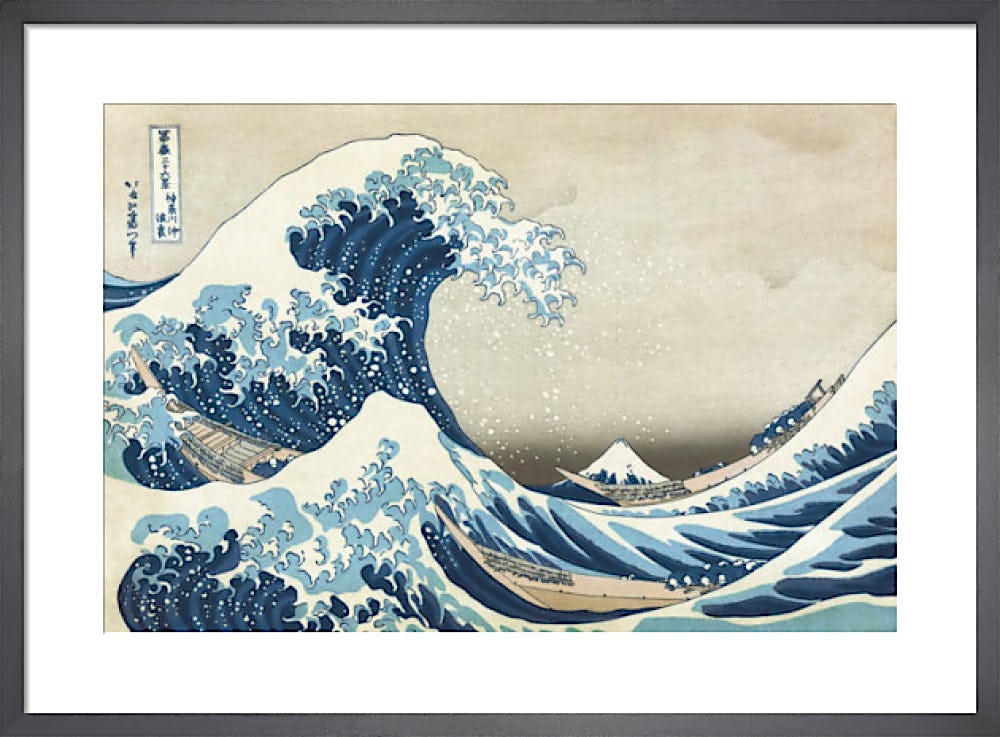Ukiyo-e: Hokusai, Hiroshige and Kawase’s idyllic Japanese landscapes
Ukiyo-e woodblock printing became a popular medium in Japan’s Edo period. Known for their idealised scenes of the floating world and breathtaking landscapes, the ukiyo-e process involved an artist, carver, printer and publisher to achieve a high volume of prints baring works by renowned artists. Discover the lives and art of three master ukiyo-e artists whose works are still revered today.

Ukiyo-e in Edo Japan
Ukiyo-e woodblock printing was introduced to Japan in the 7th century from the Asian continent as a means of reproducing ancient Buddhist script. By the mid-late Edo period, it became a popular and affordable method of art reproduction.
At a time of general peace, Japan started to face increasing external pressure to open its ports to the outside world. The country’s strict four class system began to shift, seeing the merchant class grow in size and wealth, while the samurai began to lose their authoritative position.
Translating to ‘pictures of the floating world’, Ukiyo-e refers to the licensed brothel and kabuki and puppet theatre districts of major cities including Edo (modern day Tokyo).
The earliest ukiyo-e prints illustrated scenes from these quarters, including portraits of beautifully dressed geishas, sumo wrestlers and samurai. Due to the woodcut prints ability to reproduce many copies at speed, all sectors of society could afford them, and they became so incredibly popular that the scenes and fashions of these areas of fun and hedonism influenced all levels of society.
Toward the end of the Edo period, landscape designs featuring great mountains, rivers and the changing seasons alongside ancient myth and folklore gained favour, and were created by some of today’s most recognisable names from the period.
Katsushika Hokusai (1760-1849)
A woodblock apprentice at the age of 14, Katsushika Hokusai developed at an early age the intricate skills of the ancient woodcut craft, whilst being able to intimately study the work of the artist, from line-work to composition.
Throughout his lifetime, he is said to have never put down his paint brush, producing thousands of paintings and prints, as well as illustrations for almost 270 books.
It was in 1910 that he began to produce his drawing manuals, which featured step-by-step guides on how to draw animals, mythical creatures, the people of the floating world, and nature.
Hokusai was a celebrated artist in his lifetime, whose talent and prolific output were hugely popular. Outside of Japan, ‘The Great Wave off Kanagawa’, which is part of his ‘Thirty-six views of Mount Fuji’ series, depicts three boats imperilled under the iconic wave. The composition of the work is a testament to the artist’s virtuosity of landscape drawing. Through the dangerous scene that commands the foreground, the eye is drawn to the relative calm of Mount Fuji in the distance, creating narrative in the print and awe in the power of nature.
Utagawa Hiroshige (1797-1858)
Utagawa Hiroshige was unique in his artistic journey. Holding a sympathetic regard for people from all levels of society, he managed to cross social boundaries away from his samurai family to devote himself to depicting scenes of popular customs, and poetic scenery.
Hiroshige was commissioned by his publishing company to travel around Japan drawing the many breathtaking landscapes, scenes from farming communities, and cities. The artist’s works were popular among people at every level of society, with their idealised vision of Japan, they offered a sense of calm as fears of the outside world encroaching threatened traditional customs and ways of life.
In the British Museum’s latest exhibition ‘Hiroshige: Artist on the open road’, they invite visitors to ‘Join Hiroshige on a lyrical journey through Edo Japan, exploring the natural beauty of the landscape and the pleasures of urban life.’ The exhibition features prints, drawings, illustrated books and paintings from the British Museum collection, as well as a significant gift and loans (Open now until 7 September).
Hasui Kawase (1883-1957)
Born a century later than Hokusai and Hiroshige, Husai Kawase represented a new generation of ukiyo-e artists. Kawase’s artworks illustrated a romanticised vision of Japan much like his predecessors, with the addition of advancements in the printing process.
Most notably, the ink pigments available enabled Kawase’s artworks a previously unseen level of radiance and vibrancy, achieved through many overlaid carved woodblocks. Together with his ukiyo-e team, Kawase achieved gradient blends of colour to translate illuminated sunrises over great lakes and mountains.
He is also said to have inspired his team in developing new techniques to create subtler effects for the representation of snow and flora.
































